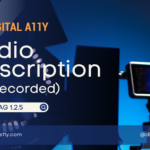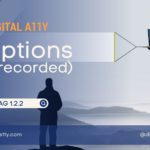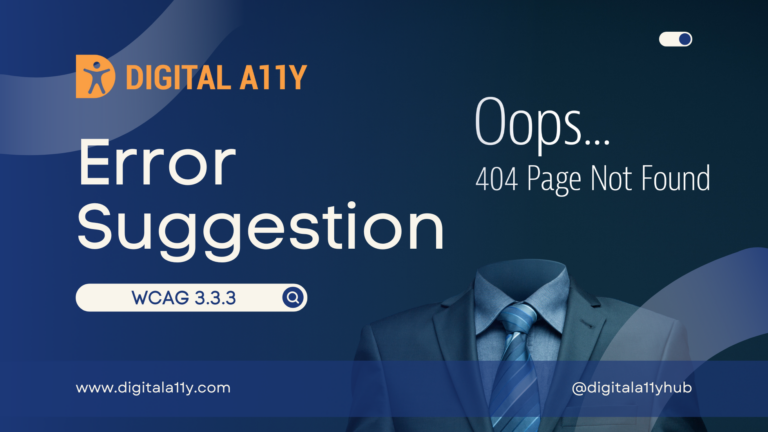Understanding WCAG SC 1.2.1 Audio-only and Video-only (Prerecorded)

1.2.1 Audio-only and Video-only (Prerecorded): For prerecorded audio-only and prerecorded video-only media, the following are true, except when the audio or video is a media alternative for text and is clearly labeled as such: (Level A)
- Prerecorded Audio-only: An alternative for time-based media is provided that presents equivalent information for prerecorded audio-only content.
- Prerecorded Video-only: Either an alternative for time-based media or an audio track is provided that presents equivalent information for prerecorded video-only content.
Audio-only and Video-only (Prerecorded) Transcript
Hello everyone. Today, we’re going to talk about audio-only and video-only content. We’ll also discuss its importance, the benefits, types, examples, and some common mistakes. Multimedia forms an inevitable part of today’s web. Audio-only content and video-only content, like movies and training videos with dialogues, often leave out a number of users while conveying information. We will discuss how such multimedia content is presented.Audio-only content provides a text transcript that presents the same information that is conveyed in the media. Video-only content provides an audio description that conveys the same visual information conveyed in the media.
Now, let’s ask ourselves, why does it matter? Well, it is important for people with disabilities to perceive the same information that is perceived by everyone through video-only and audio-only content.
Now, let’s talk about who benefits from this. People who are deaf and hard of hearing need to understand what is conveyed in the audio-only content. Non-native speakers and people who can’t understand a specific dialect would benefit from the textual transcripts of audio-only content. People without vision and with limited vision need to understand the visual information conveyed in the video-only content through an audio track that describes the visual information.
Some of the examples of audio-only content are podcasts, pre-recorded radio dramas, and audio interviews. One example of video-only content is an animated video of an animated hand making a paperboard video recipe.
Some of the common mistakes are the unavailability of text transcripts or an audio description. The audio description for video-only content does not include descriptions of all important visual information. The text transcript does not include all spoken dialogue and sound effects.
This is the end of the video. Thank you for joining. If you like the video, do like and subscribe.
This success criterion requires that audio-only & video-only content are provided with alternative method of conveying information. A text transcript can be provided for audio track & text transcript or audio track can be provided for a video that doesn’t have an audio. Transcripts help all kind of users like blind, hard of hearing, deaf & deaf blind to perceive content & understand it easily.
An example of audio-only content is podcast. A video-only content is a video that is silent.











I love the way you clarified the success criteria. It’s really precise, clear and easily understandable. I do appreciate your efforts.